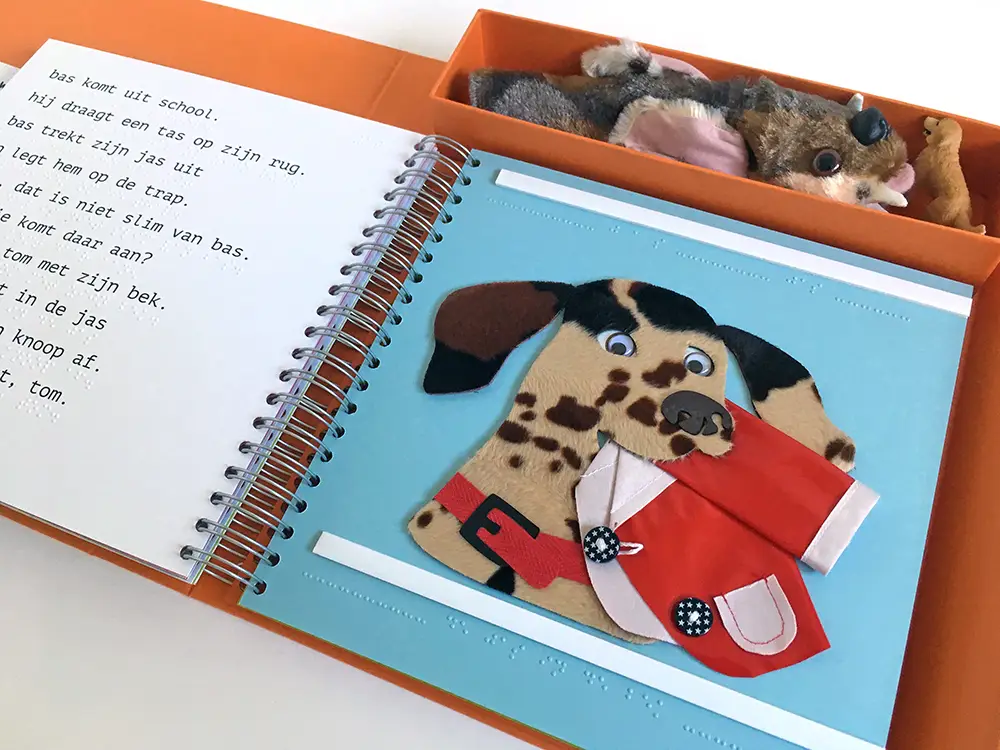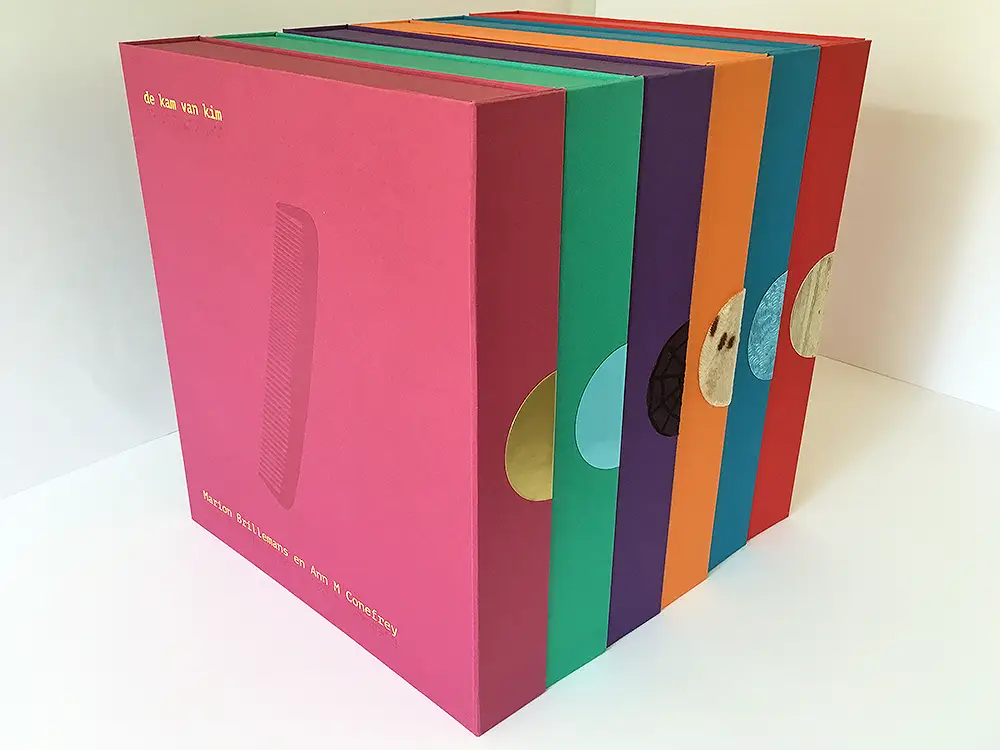Six tactile children’s books
Over a period of two years I collaborated with braille teachers and their young pupils to design and produce a completely new series of children’s tactile books. The series, known as ‘Feel Your Reading Book’ (‘Voeljeleesboek’, a follow on from touch and feel books for preschool children) aims to stimulate early development of braille literacy among visually impaired children between the ages of 5 to 9 years.
Sighted children are spoiled for choice when it comes to the abundance of beautifully illustrated story books. However, this is not the case for children with a visual disabilty so when I was asked to design the series I jumped at the opportunity to be involved in such a worthwhile project. It puts a smile on my face knowing that young children learning braille can now experience the magic of stories coming to life on the pages of these tactile books.

‘Feel your reading book’
This series of tactile picture books is unique for several reasons. It was the first of its kind in the Netherlands, so there were no references or blueprint for how it should be carried out. I was given the responsibilty, not only to design the books and manage the production but also to develop a workflow for creating more quality tactile books in the future.
The teachers came up with the concept for the series, outlining the objectives and educational requirements in a briefing which formed the backbone of the project. Using only simple braille words the teachers cleverly crafted the stories to correspond with different levels of early braille development as part of the braille curriculum. Very young children who are still learning the first letters in braille can read alongside an older child, teacher or parent.
The tactile illustrations in combination with a simple sentence in braille help to support the stories, adding another layer of meaning. Furthermore, placing a strip above the braille is an inventive way to prompt correct use of the fingers. In addition to the illustrations each books contains a 3D model encouraging more interaction with the stories and so greater understanding of language through experience. The books also come with a folder with reading tips and a braille alphabet to help parents support their child.
The subpages give a brief description of each book along with a selection of photographs. The books have all been written in Dutch. The English translations are fictitious.

